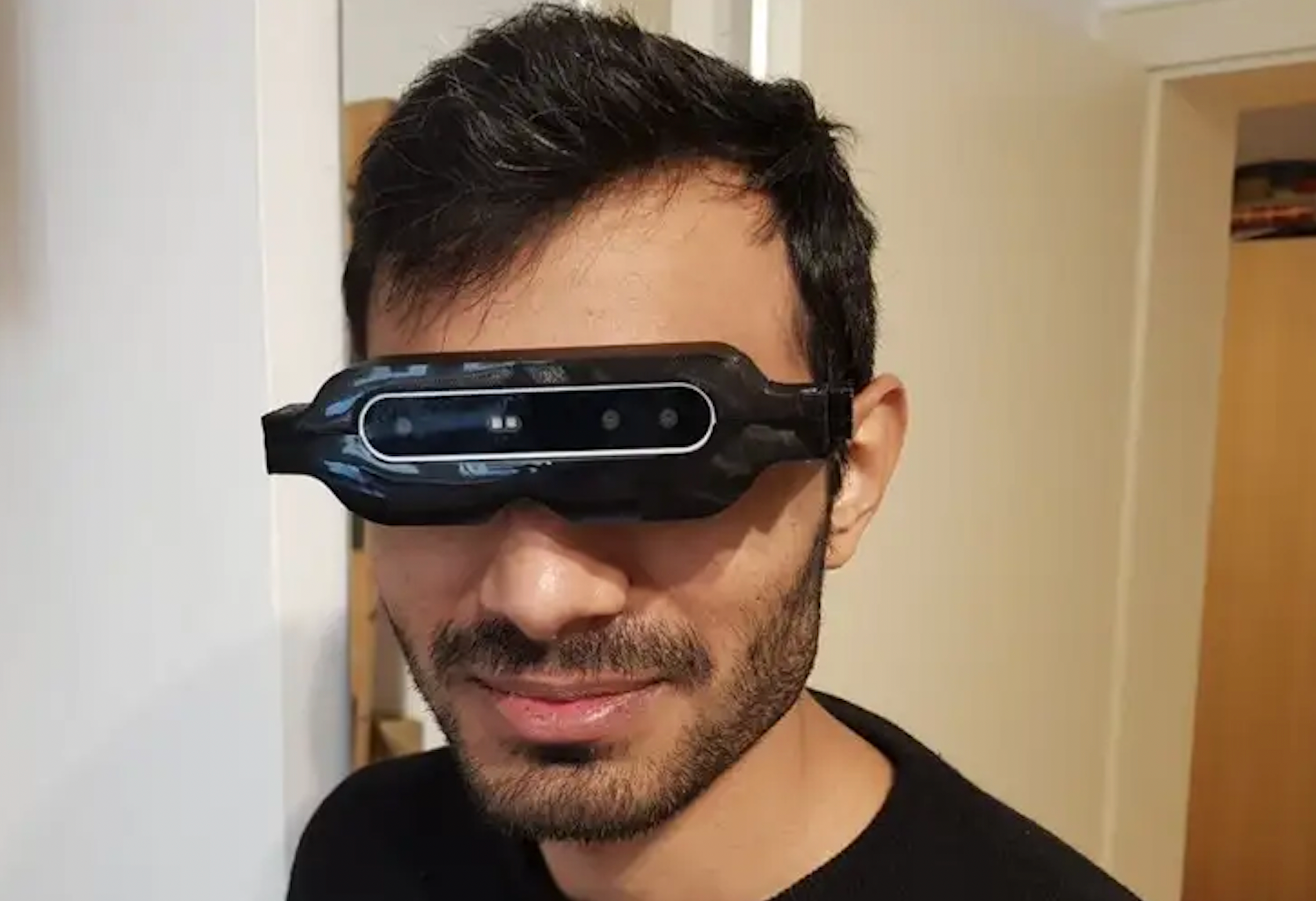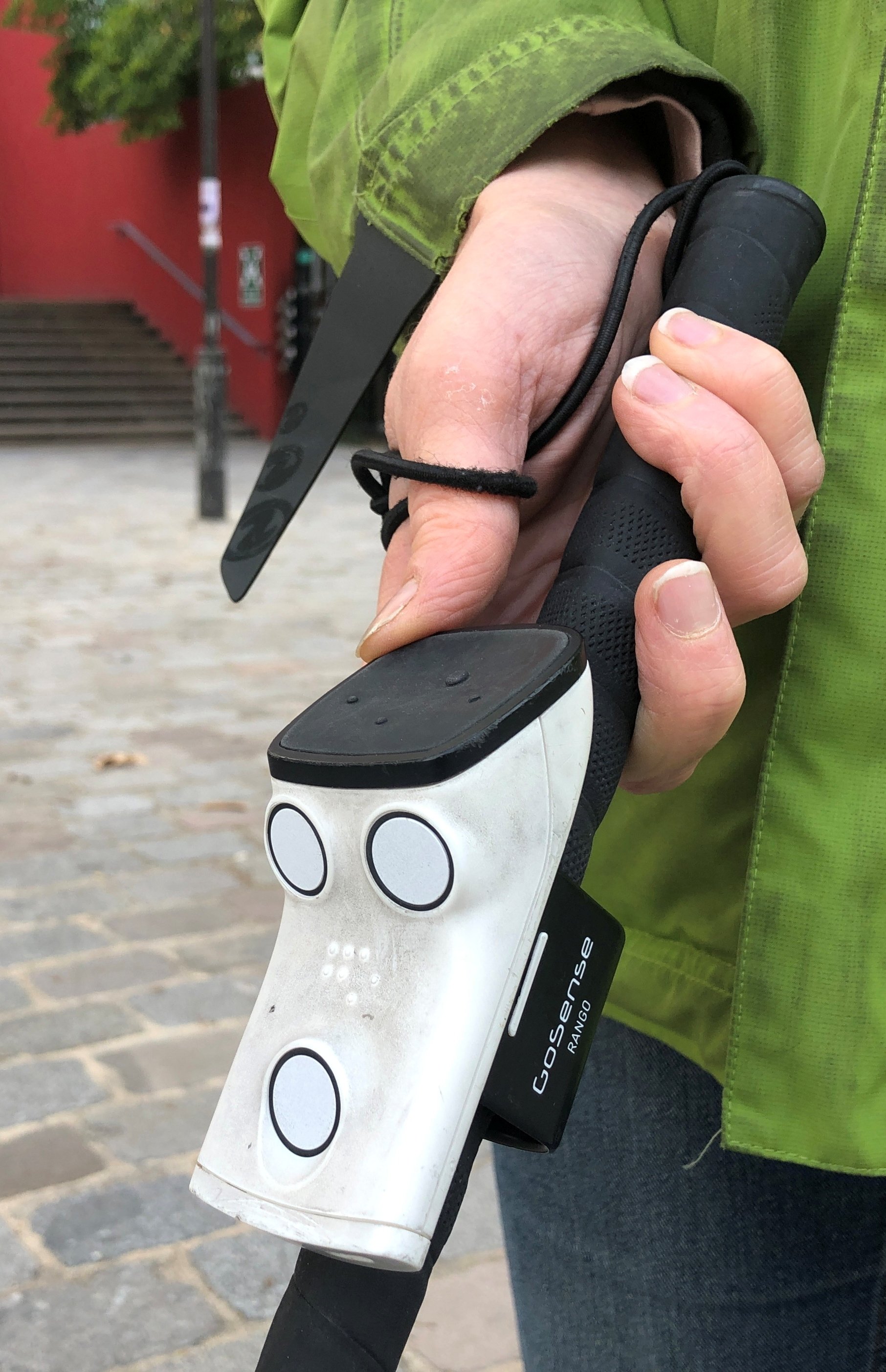Assistive Technology for the Blind: Solutions to Transform Lives
Wiki Article
Discover Ingenious Tools Created for the Visually Impaired
The development of cutting-edge devices for the aesthetically impaired represents a significant development in ease of access and self-reliance. Technologies such as wise glasses with AI capabilities and mobile applications designed to provide acoustic summaries are reshaping daily experiences for users. In addition, wearable tools that utilize haptic comments improve environmental awareness, while modern Braille advancements use brand-new means to involve with message. As these devices proceed to evolve, their influence on the lives of those with aesthetic impairments raises essential questions about the future of inclusivity and freedom in different aspects of life. What exists in advance in this technological landscape?Smart Glasses for Navigation

Smart glasses made for navigating are changing the means visually impaired individuals communicate with their setting. These advanced gadgets make use of a mix of camera modern technology, expert system, and auditory comments to give real-time information concerning surroundings. By employing challenge detection systems, smart glasses can notify users to prospective hazards, allowing more secure flexibility in both acquainted and unfamiliar setups.
The combination of GPS technology even more enhances navigation capabilities, enabling users to obtain auditory instructions as they move. This hands-free method not just cultivates freedom yet additionally empowers aesthetically impaired people to navigate city landscapes with raised confidence. In addition, many wise glasses are equipped with attributes that determine sites and road indications, offering contextual info that boosts the customer experience.
Additionally, the growth of these devices is continually progressing, with companies functioning to boost the precision of things acknowledgment and expand the series of navigational functions. As clever glasses become a lot more inexpensive and easily accessible, they hold the prospective to significantly change life for aesthetically damaged individuals. Ultimately, these ingenious devices represent a crucial step toward inclusivity, offering boosted movement and a higher feeling of autonomy for individuals browsing the world around them.

Mobile Apps for Daily Living
How can mobile applications boost the lives of visually damaged people? Mobile applications are transforming the way aesthetically damaged users navigate their environments, handle daily tasks, and accessibility details. These applications provide vital assistance with different performances, promoting freedom and improving lifestyle.Several ingenious mobile applications are designed specifically for everyday living. Apps like Be My Eyes connect visually damaged users with sighted volunteers via video clip phone calls, allowing them to obtain real-time assistance with tasks such as reviewing labels or browsing strange areas. Seeing AI, established by Microsoft, makes use of fabricated knowledge to describe surroundings, read text, and recognize items, efficiently changing a mobile phone into an effective tool for day-to-day aid.
In addition, navigating apps customized for the visually damaged, such as Aira and BlindSquare, provide audio-based instructions and ecological information, allowing customers to traverse their surroundings safely and confidently. Beyond navigation and immediate aid, mobile apps also sustain organization and task management, with attributes that assist individuals establish tips, produce to-do listings, and track appointments. In summary, mobile applications serve as essential resources, encouraging visually impaired individuals to lead even more independent and satisfying lives.
Wearable Technologies for Assistance
Empowerment via modern technology is increasingly evident in the world of wearable devices developed to help visually damaged people. These ingenious devices integrate perfectly right into daily life, improving navigation and offering important responses to customers. Smart glasses geared up with video cameras can read and recognize faces message out loud, allowing customers to connect even more with confidence in social and specialist setups.An additional significant advancement is using haptic comments systems in wearable devices. These systems use vibrations or other tactile signals to communicate information about the user's setting, such as obstacles or changes in surface, boosting wheelchair and safety. Wearable technologies also include wristbands that attach to i exam near me mobile phones, notifying individuals to notifications through subtle vibrations, hence boosting connectivity without dependence on visual signs.
As these innovations remain to progress, they are not just improving freedom for aesthetically damaged individuals but likewise cultivating a higher feeling of addition in culture. By bridging the space between obstacles dealt with in day-to-day living and the possibility for freedom, wearable innovations serve as critical devices in the pursuit for equality and empowerment for those with visual impairments.
Audio Description Tools
Sound summary devices play an important duty in enhancing access for visually damaged individuals, offering them with the ability to involve with visual media. Mobility aids for visually impaired users. These tools use narrated summaries of key aesthetic aspects in movies, tv shows, and visit this web-site live efficiencies, making sure that customers can totally understand the context and feelings communicated via visualsSound summary can be incorporated right into numerous platforms, consisting of streaming solutions, movie theater screenings, and live movie theater. Lots of prominent streaming services now consist of audio description as an ease of access attribute, enabling viewers to select it quickly. Along with mainstream media, specialized apps likewise exist, providing audio descriptions for art exhibitions, museums, and other cultural events.
The effectiveness of audio description depends upon the skill of the narrators, who need to convey aesthetic details succinctly without diminishing the initial audio. Developments in this area are additionally leading the way for more individualized experiences, where customers can change the degree of detail and pacing according to their preferences.
Braille Innovations and Devices
Braille developments and tools have actually considerably changed the way visually impaired people connect with message and info. Modern developments have actually resulted in the growth of functional tools that improve literacy and independence amongst individuals. Notably, Braille show innovations have actually advanced, enabling vibrant reading experiences. These devices transform electronic message into Braille, enabling users to access a large selection of information on mobile phones, computer systems, and tablet computers.
Moreover, mobile Braille notetakers combine standard Braille input with modern-day performances, promoting note-taking, organizing, and file editing and enhancing on the go. Mobility aids for visually impaired users. These compact devices usually include text-to-speech capabilities, connecting the void between Braille and auditory details
On top of that, cutting-edge Braille printers have go to this website arised, allowing customers to generate Braille labels, papers, and academic products effectively. This access fosters better participation in instructional and professional settings, ultimately advertising inclusivity.
In addition, research into wise Braille modern technologies remains to increase. Devices that integrate synthetic knowledge are being checked out to supply real-time navigating assistance and contextual information, enhancing the user experience in varied setups. Generally, these developments mirror a dedication to equipping visually damaged individuals through modern technology, ensuring they can easily accessibility and engage with the globe around them.

Final Thought
The development of innovative devices for the aesthetically damaged considerably improves independence and quality of life. These modern technologies not just foster greater incorporation but also promote autonomy in daily activities, ultimately contributing to a more obtainable and fair society for aesthetically damaged individuals.As smart glasses become a lot more inexpensive and obtainable, they hold the possible to substantially transform daily life for aesthetically damaged customers. Mobile applications are reinventing the method aesthetically impaired customers navigate their settings, take care of daily tasks, and accessibility information. Applications like Be My Eyes link visually impaired users with sighted volunteers via video clip phone calls, enabling them to obtain real-time aid with tasks such as checking out labels or navigating strange rooms.Furthermore, navigating applications customized for the visually damaged, such as Aira and BlindSquare, offer audio-based directions and ecological information, making it possible for customers to traverse their environments securely and confidently.The development of innovative devices for the aesthetically impaired substantially boosts self-reliance and top quality of life.
Report this wiki page